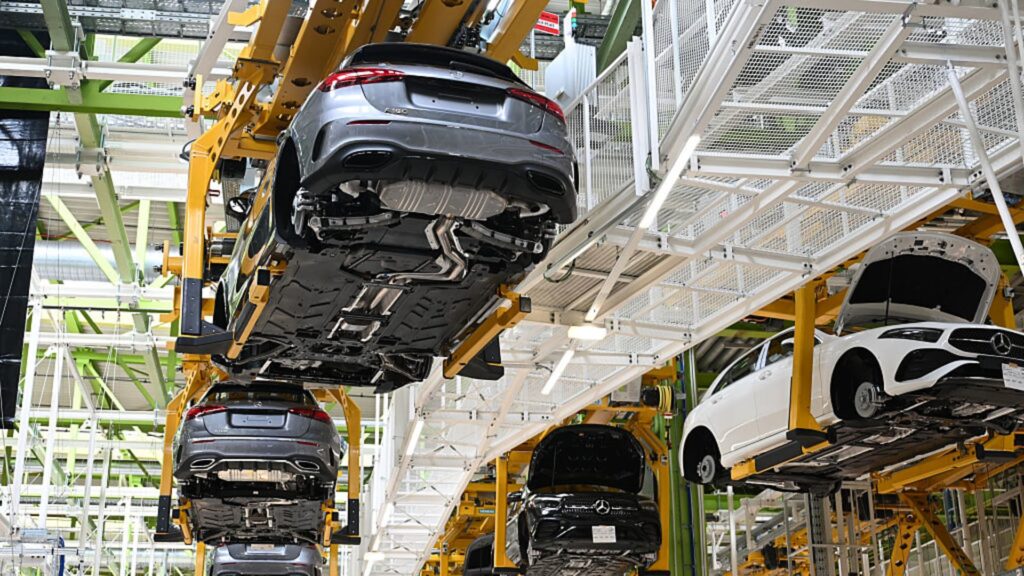
UPDATE: A groundbreaking trade agreement between the United States and the European Union has just been announced, introducing a 15% tariff on most EU goods. This significant reduction from the threatened 30% tariff offers a glimmer of hope for the struggling auto sector, but concerns remain high.
President Donald Trump hailed the deal as the “biggest trade deal ever made,” emphasizing its potential benefits for the automotive industry. The agreement, finalized on June 4, 2025, reduces the current tariff on European auto imports from 27.5%, providing immediate relief to manufacturers grappling with steep costs.
Officials, including European Commission President Ursula von der Leyen, described the deal as a “good deal” after intense negotiations. However, industry leaders warn that while the agreement alleviates some tensions, the new tariff still imposes a substantial financial burden.
The German Association of the Automotive Industry (VDA) expressed cautious optimism, stating that the deal averts a transatlantic trade dispute. Yet, VDA President Hildegard Müller underscored the reality that the 15% tariff will cost German automakers billions annually, complicating their transformation strategies.
Analysts from the European Automobile Manufacturers Association (ACEA) acknowledged the urgency of the new tariff landscape. ACEA Director-General Sigrid de Vries noted that while the agreement eases some uncertainty, the higher tariffs will still negatively impact the auto industry on both sides of the Atlantic.
Economic experts, including Rico Luman from Dutch bank ING, stated that although the 15% tariff is a step down from 27.5%, it remains a “significant burden” for European manufacturers. Luman highlighted that profit margins are already under pressure, making it difficult for companies to pass on costs to consumers without risking a loss in sales volume.
The immediate market reaction saw the Stoxx Europe autos index rise by 1.6%, though gains were later tempered. Notably, French car parts supplier Valeo surged by 4%, while luxury brands like Ferrari experienced a slight increase of 0.9%. However, major players such as BMW, Volkswagen, and Mercedes-Benz Group saw declines of over 1.2%.
Equity analysts predict that EU automakers heavily reliant on imports from Europe, such as Porsche, Mercedes, BMW, and Volkswagen, stand to benefit the most from this trade deal. Conversely, Stellantis is less likely to see significant gains due to its limited imports from the EU.
This new tariff framework represents a pivotal moment for the automotive industry, with potential ripple effects for global supply chains and pricing strategies. As details of the agreement continue to emerge, the sector remains on high alert, watching for further developments that could shape its future.
Industry experts and stakeholders will be closely monitoring the implications of this trade agreement. Stay tuned for updates as the situation evolves and more insights become available on how these tariffs will shape the automotive landscape.






